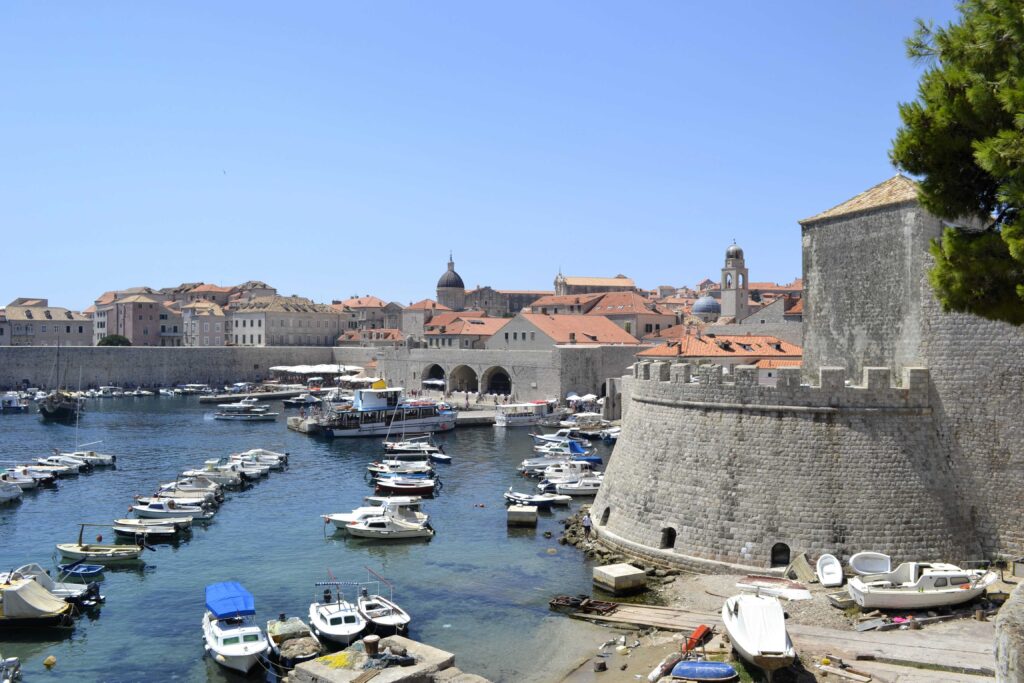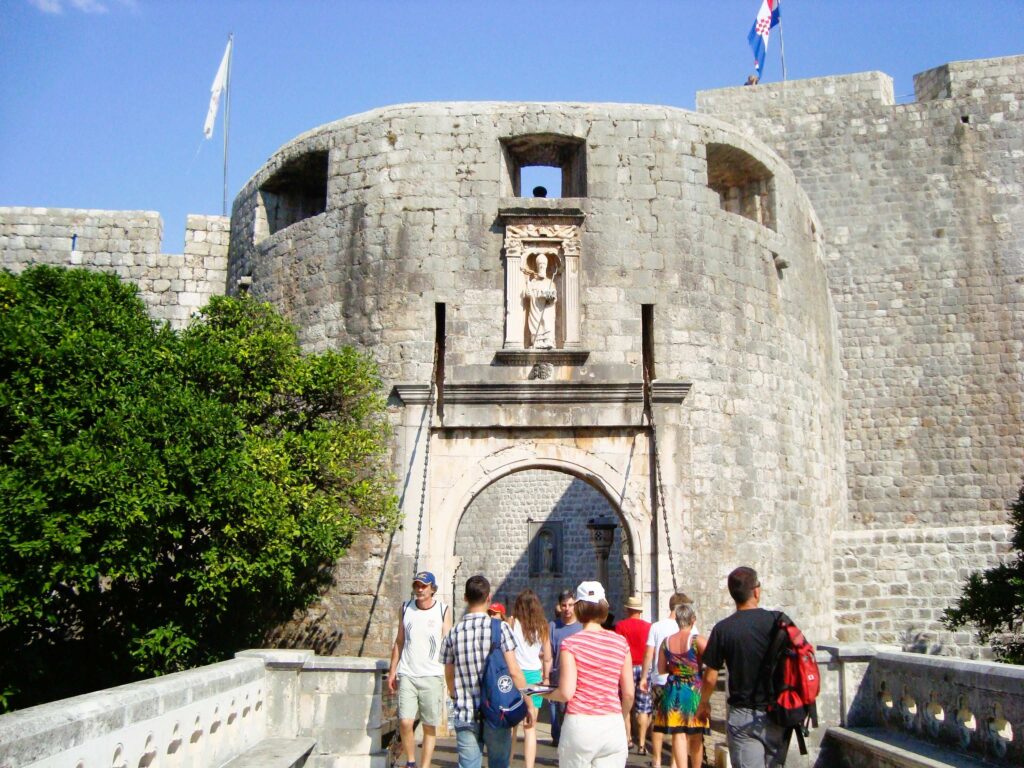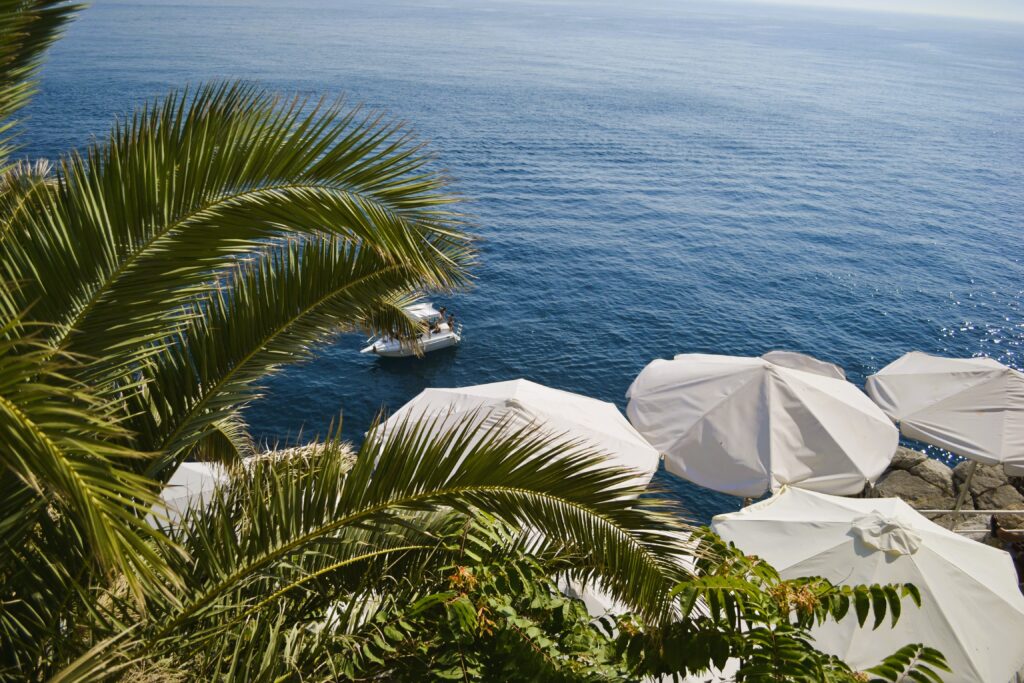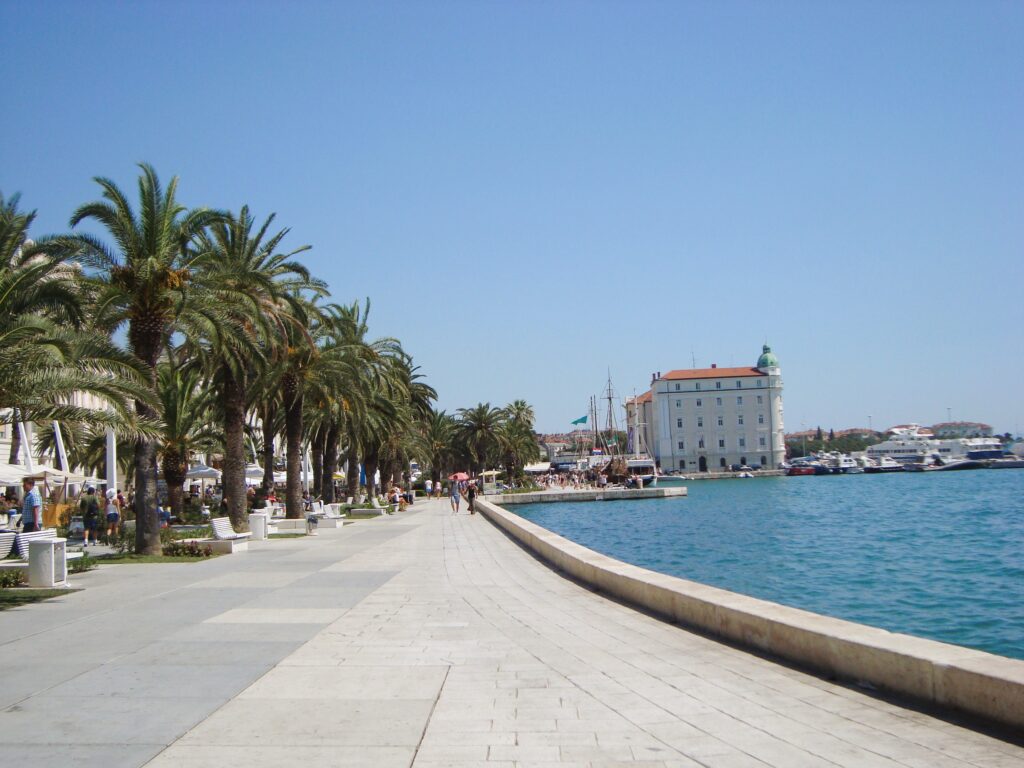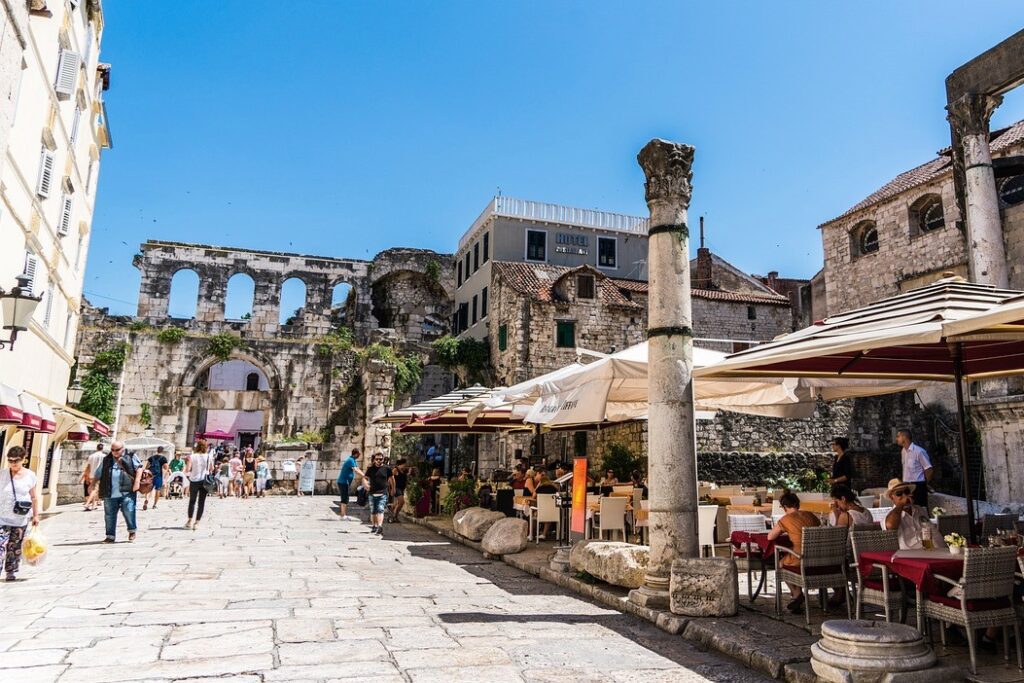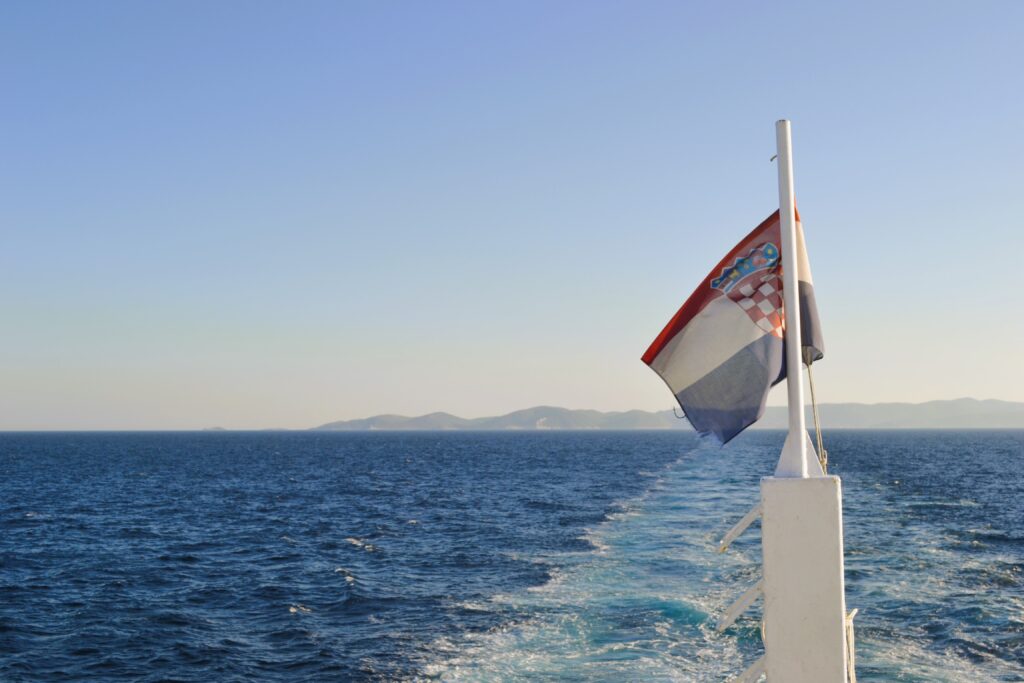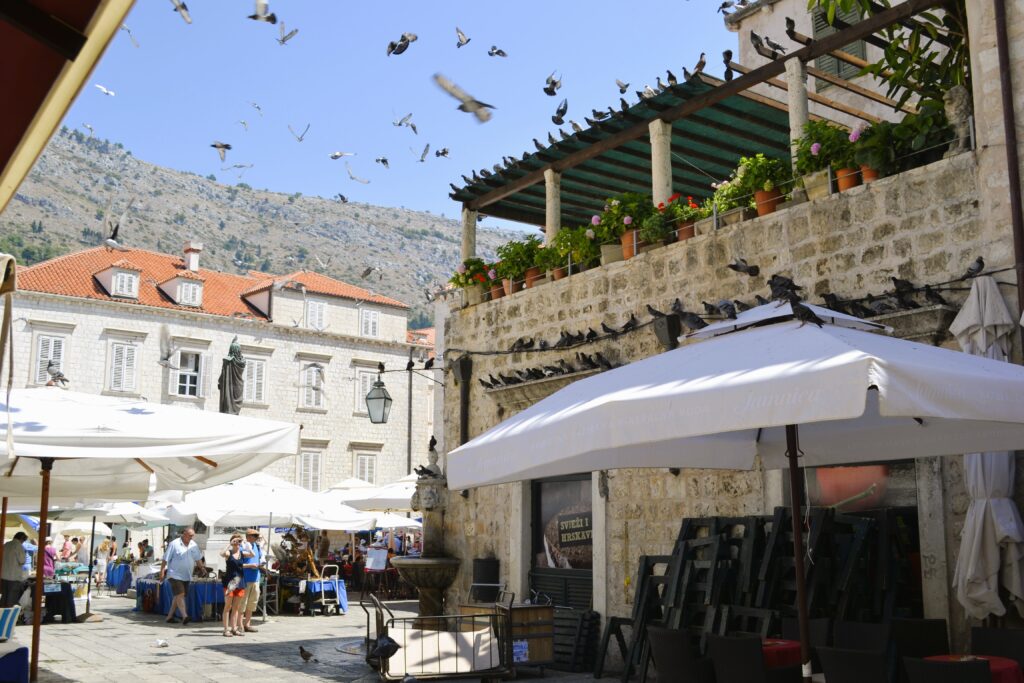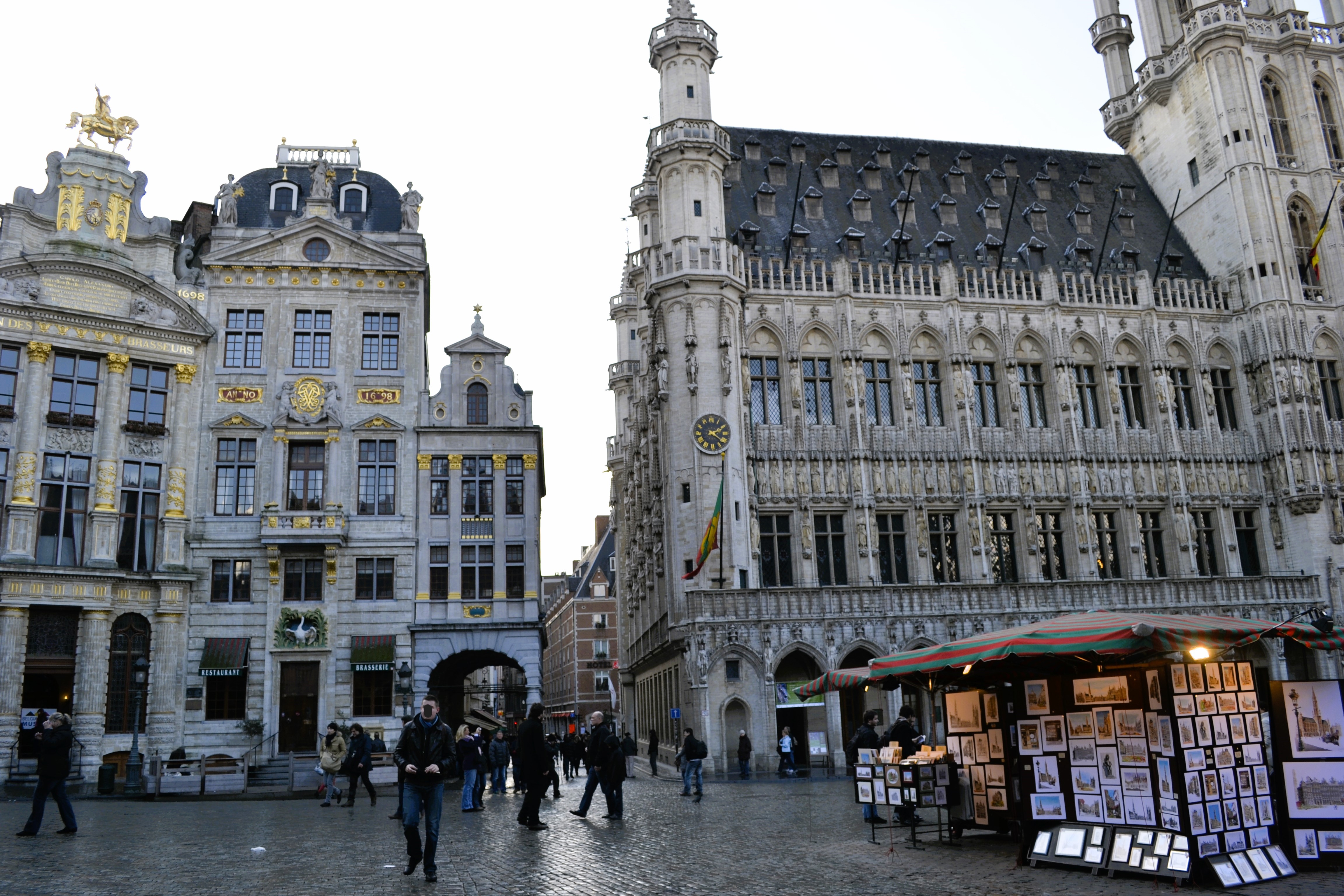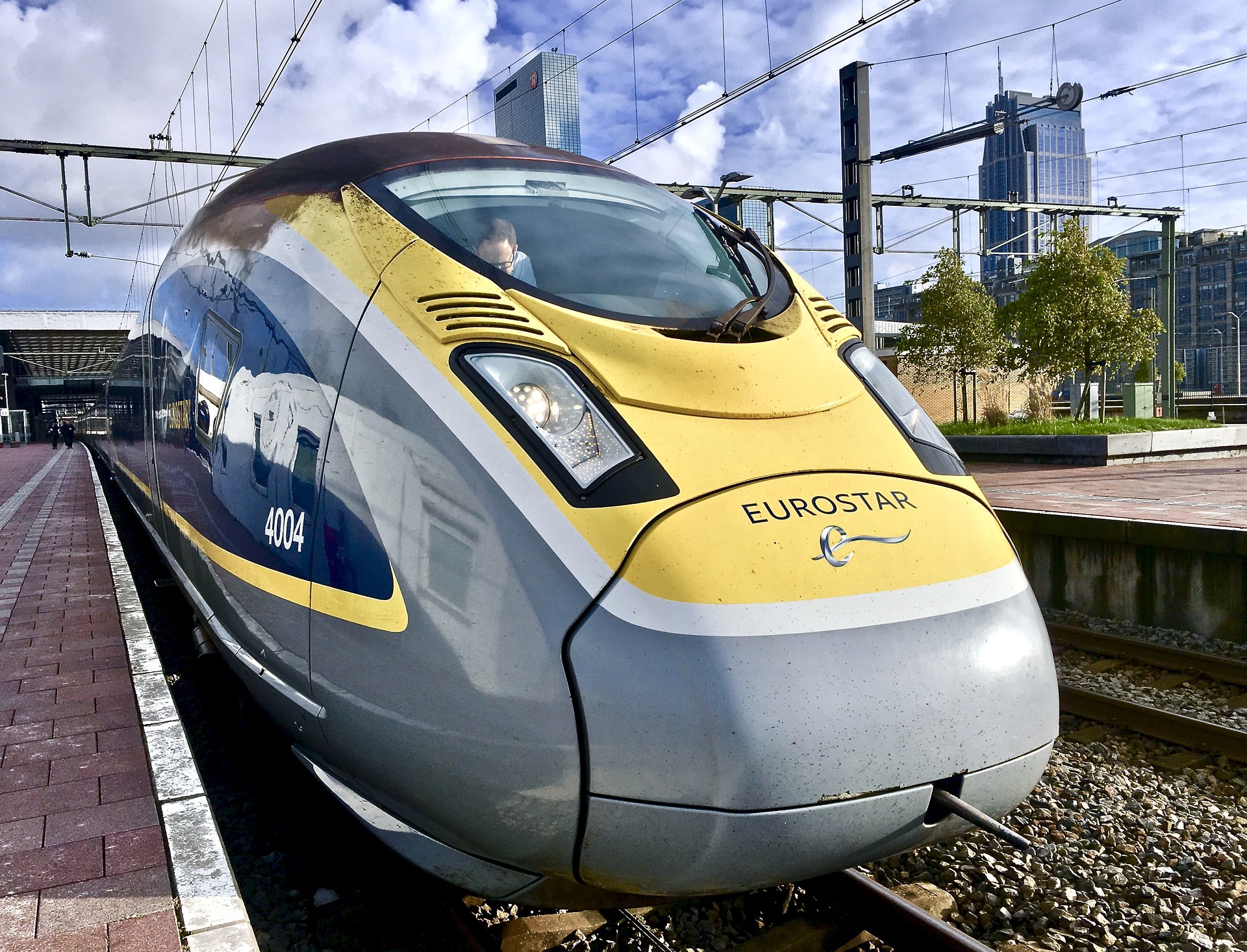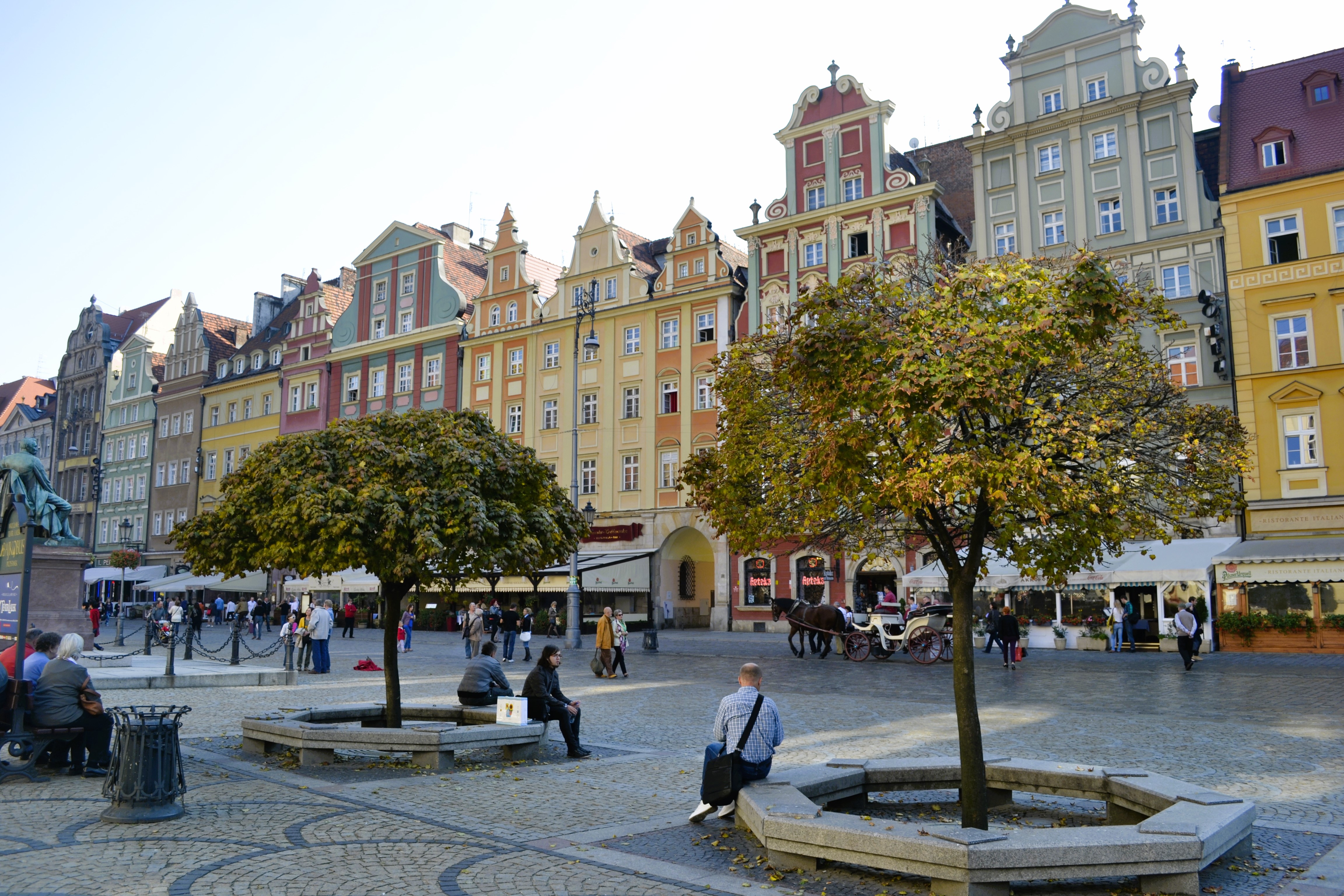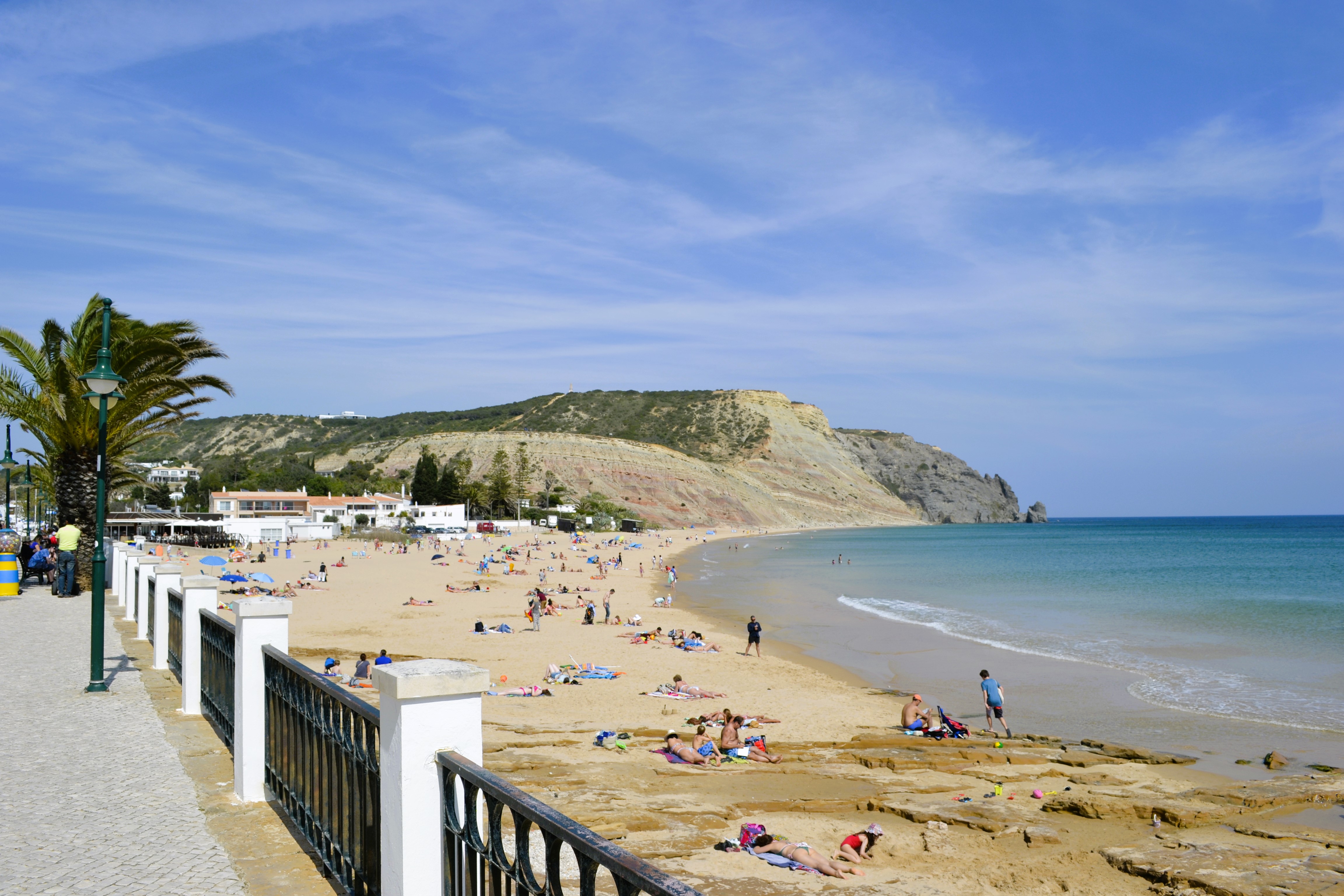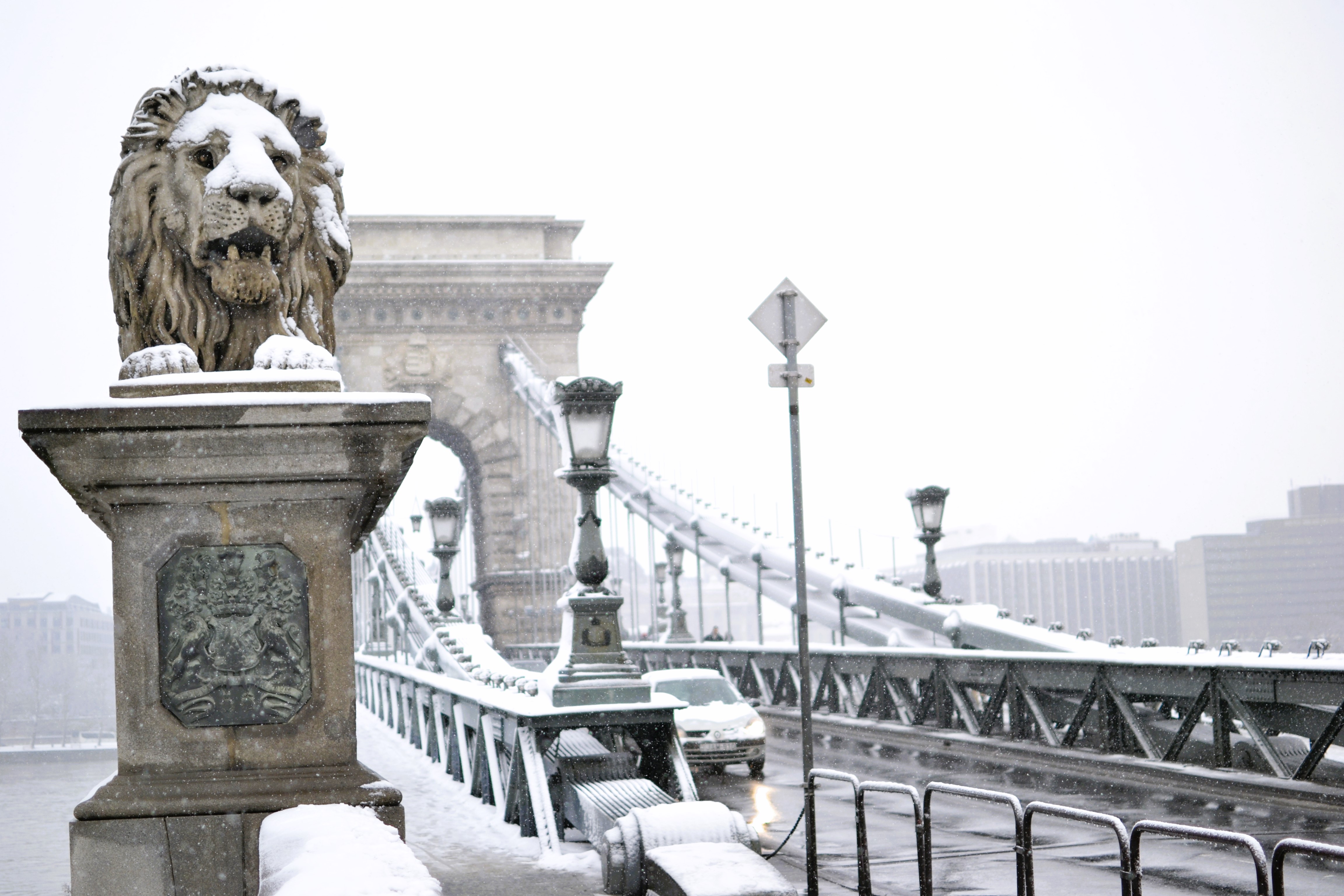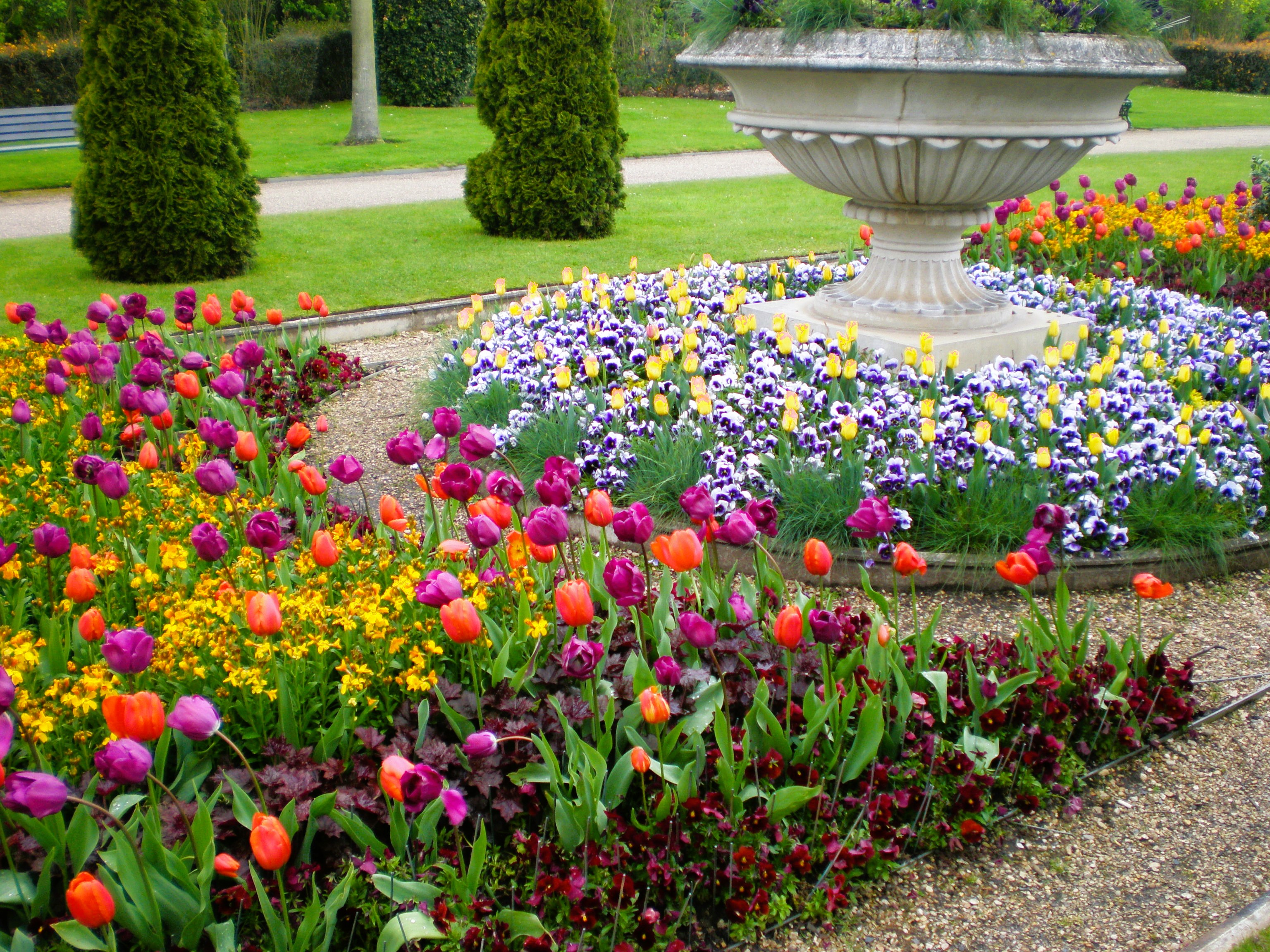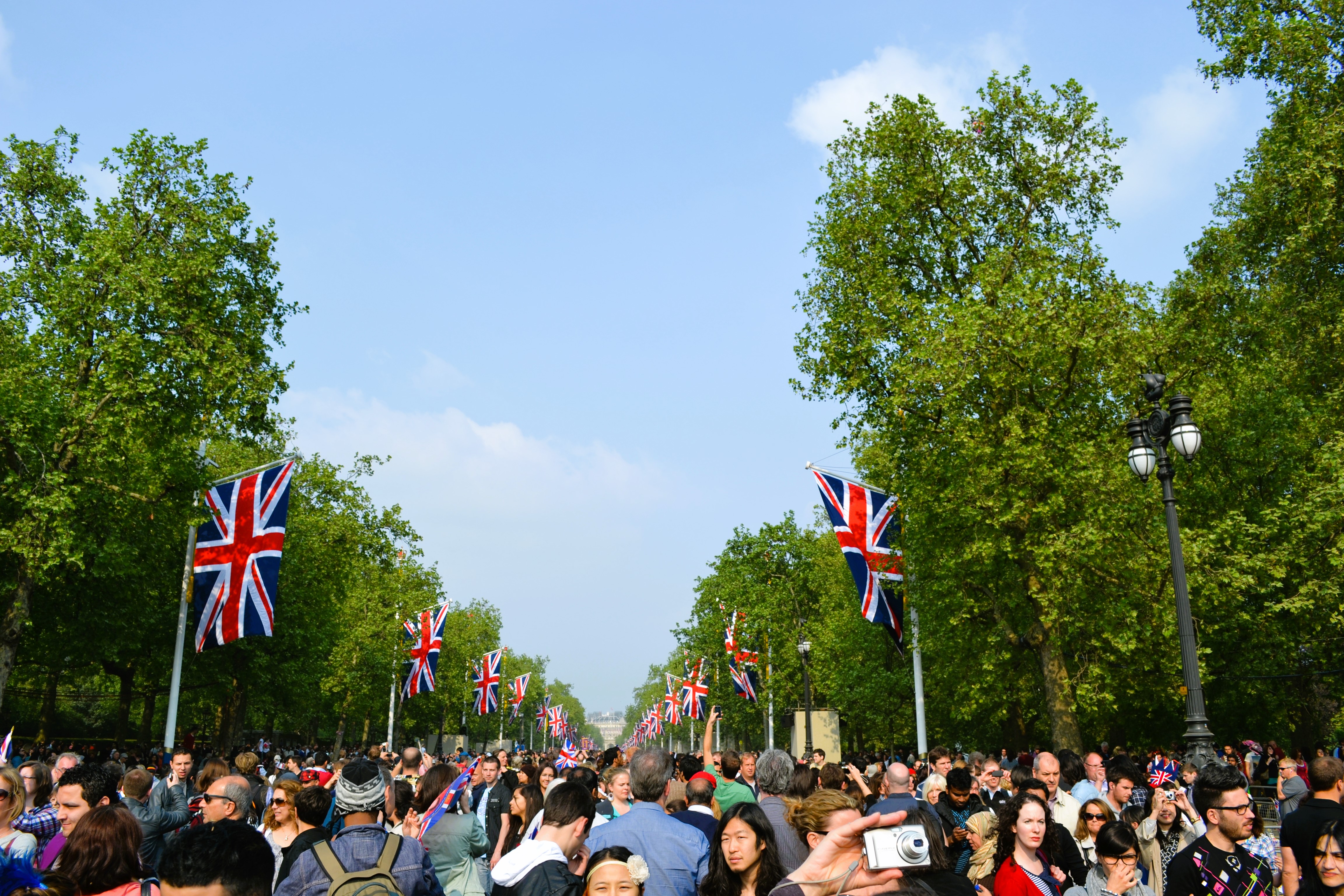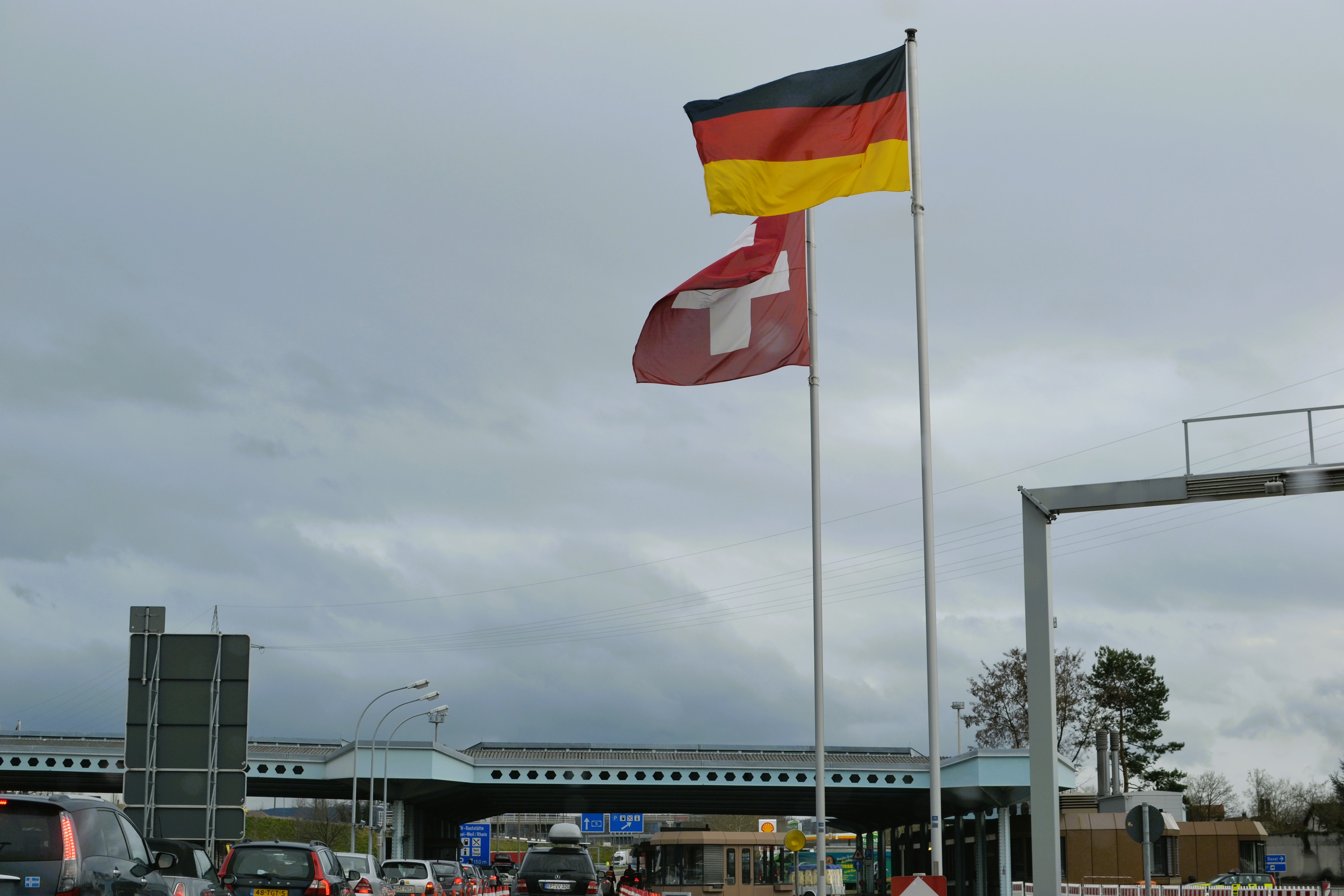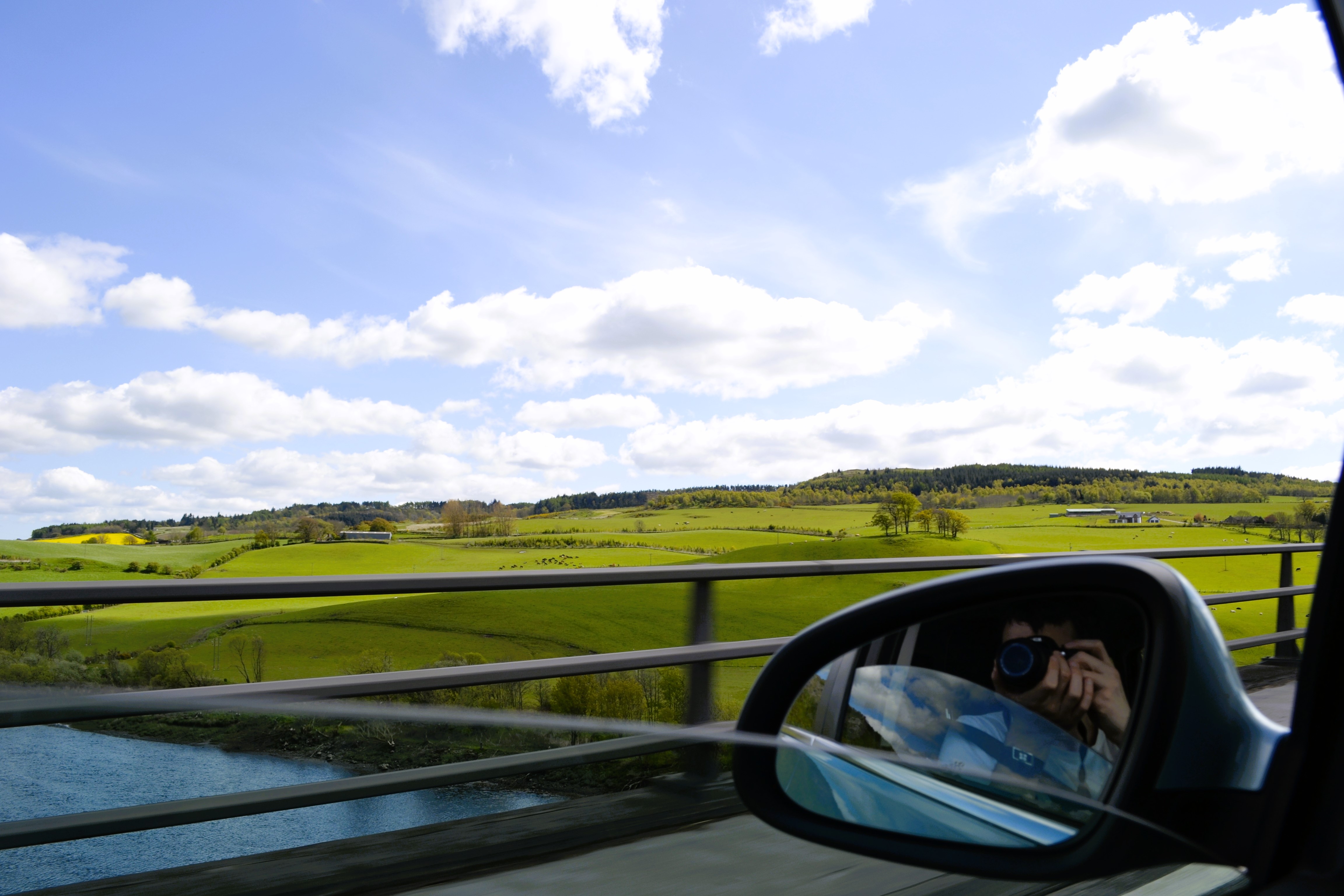Croatia Island Hopping? Let me take you to explore 3 of the best islands in Croatia, Korčula, Vis & Hvar. Crystal-clear blue waters and gorgeous little towns make these islands must-see destinations. Check out the grand walls of Dubrovnik and the city buzz of Split as gateways, and of course, let’s not forget the food, the seafood is the best you will ever taste!
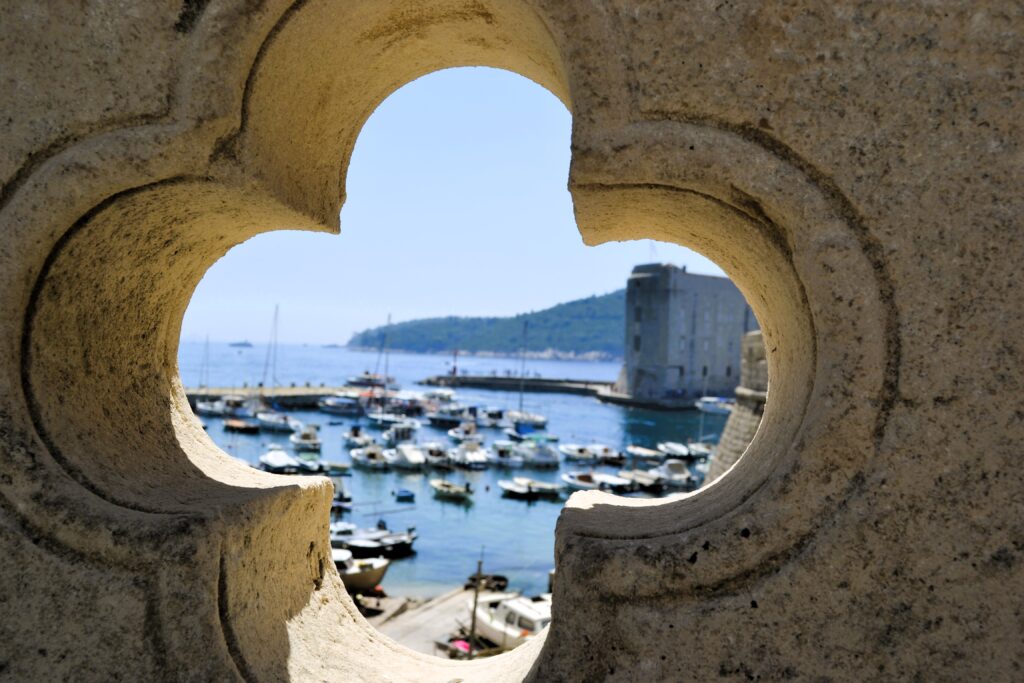
Starting your trip: Dubrovnik or Split?
None of the Islands I talk about in this post have airports, so you will need to take a ferry to get there. Most people opt for getting to the islands from either Dubrovnik or Split, in mainland Croatia. Where should you start your trip from? If you have the time to do both cities, do both. Depending on what islands you are visiting, it may make ferry connections easier so that you are not backtracking.
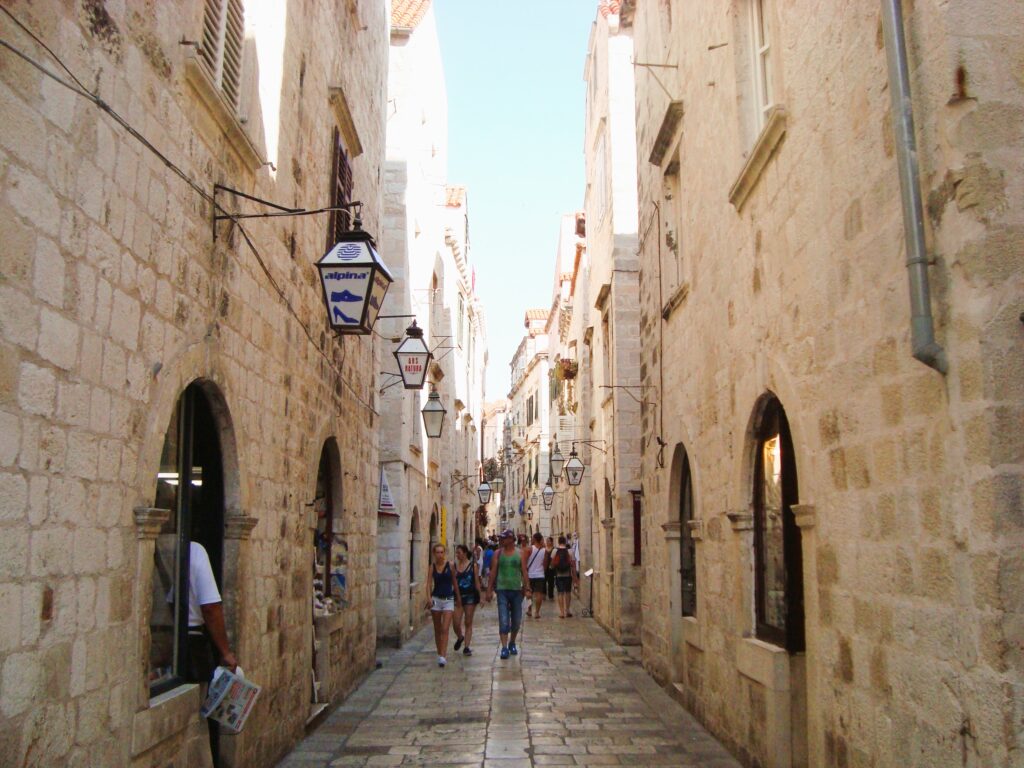
Dubrovnik is a much smaller town, but it’s jam-packed with history and beautiful to explore due to its location, well-preserved old town, and fortified walls. It is very touristy and can be quite expensive if staying in hotels (many people opt to stay in local guesthouses). Split on the other hand has much more of a city vibe, and is much bigger and more affordable for budget travellers. It really depends on what your preferences are when you are traveling to make you go for either Split or Dubrovnik as your base.
Want to know more? Check out my other post: Where is better – Dubrovnik or Split?
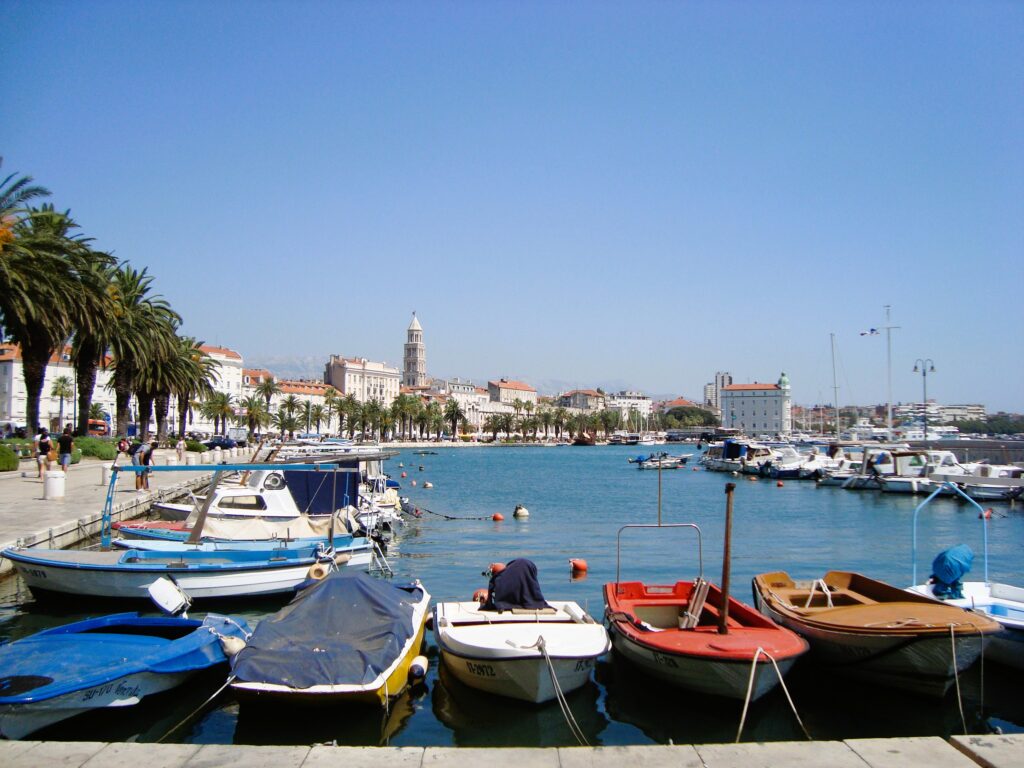
Getting to the islands & Getting around
Most of the popular ferry routes in Croatia are run by large car ferries or catamarans. Jadrolinija ferries, serves routes to the islands from Dubrovnik & Split as well as from Italy to Split (from Ancona, 11 hours) and to Dubrovnik (from Bari, 7 hours). Local company Krilo also runs services from Split to some of the Croatian islands like Hvar, Korčula & Brac.
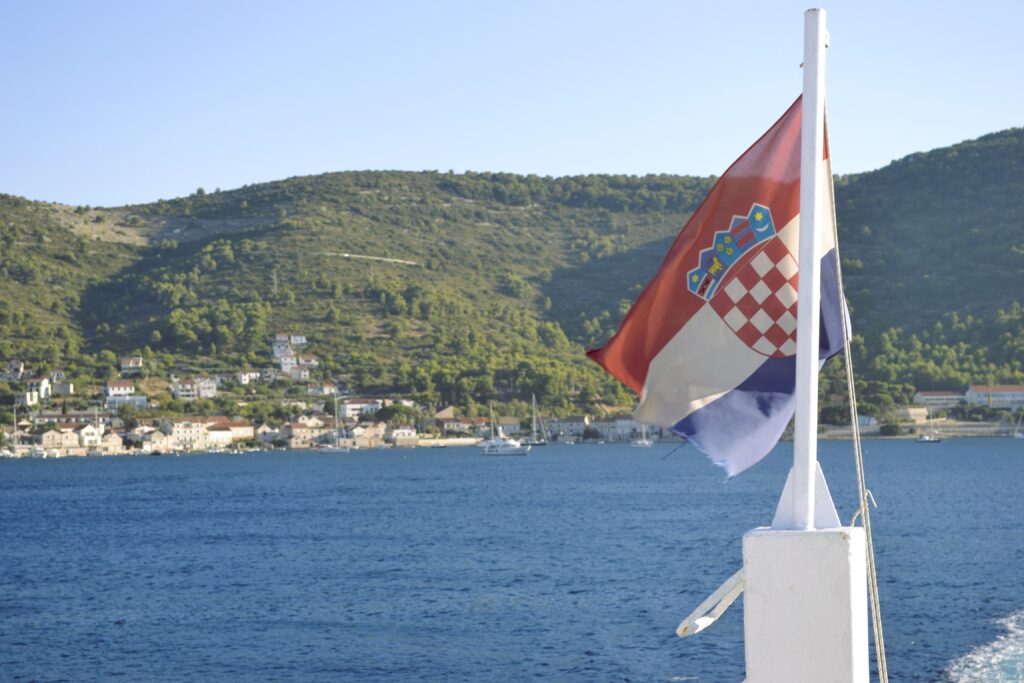
Once on the islands, buses will get you around to the main town centers. Bikes can also be hired from local travel agencies as well as cars and scooters from car rental companies. My preference is to personally hire a car so you can go and explore easily at your convenience. A thing to note is that hiring a car in summer (especially around July / August) can be difficult, and if you leave it to when you arrive, cars may not be available. Book in advance if possible.
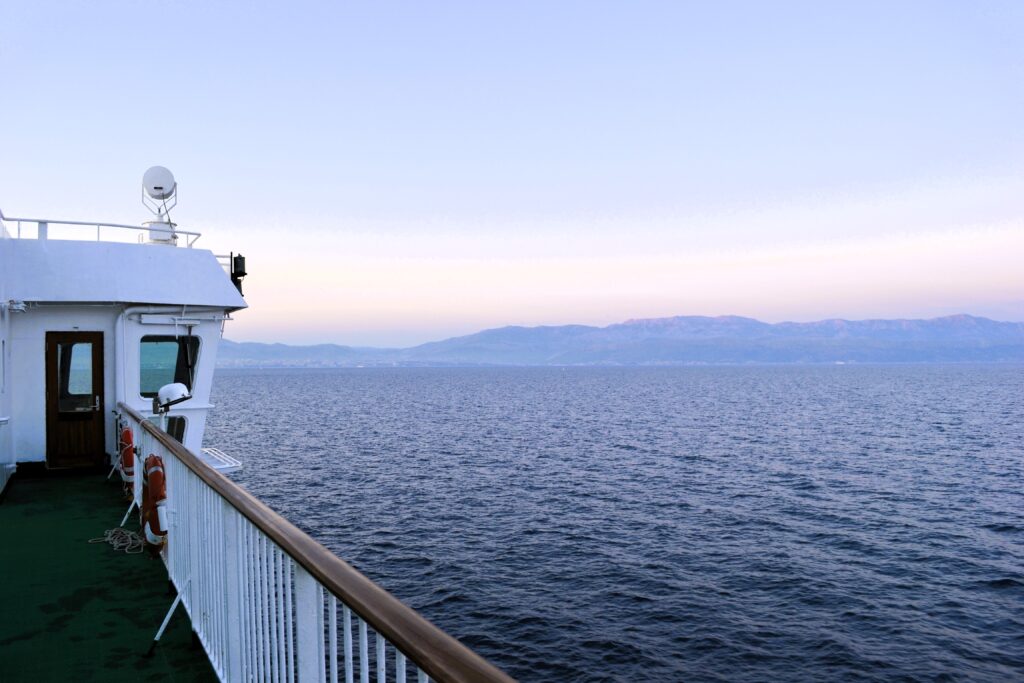
What to eat in Croatia
In most places in Croatia, the menus at restaurants (called Konobas in Croatian) are well-catered for tourists. You will find lots of pasta & pizza (some better than others), meat, and seafood. I was initially put off by the very touristy-looking menu, but I must admit, in most instances, I was quite impressed. The fish & seafood in Croatia is abundant and delicious, especially on the coast and the islands.
The typical Dalmatian Style seafood is just grilled and dressed very generously with olive oil, parsley, and garlic. There is an old saying in Croatia:
The fish in Croatia must swim 3 times, first in the sea, then in olive oil, and then in wine!
Traditional Dalmatian Saying
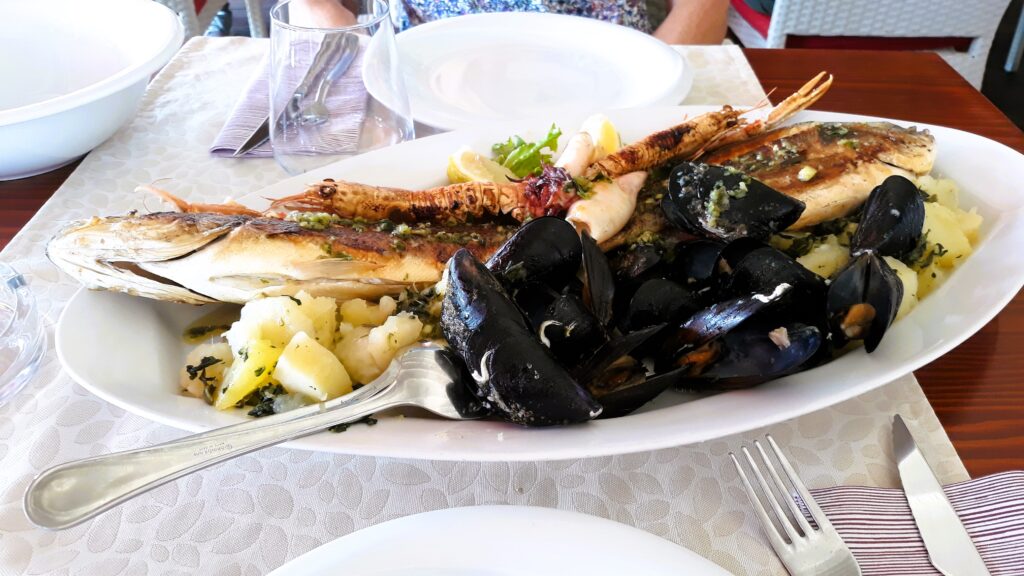
You will generally find Skampi (prawns with long claws), octopus, squid, and local Adriatic fish varieties on a seafood platter.
Other popular dishes are Black Ink Risotto, Octopus salad, and generous plates of ‘small fried fish‘ (minnows). A traditional side dish to accompany seafood and meat is par-boiled potatoes with a local variety of a green similar to Swiss chard, called Blitva.
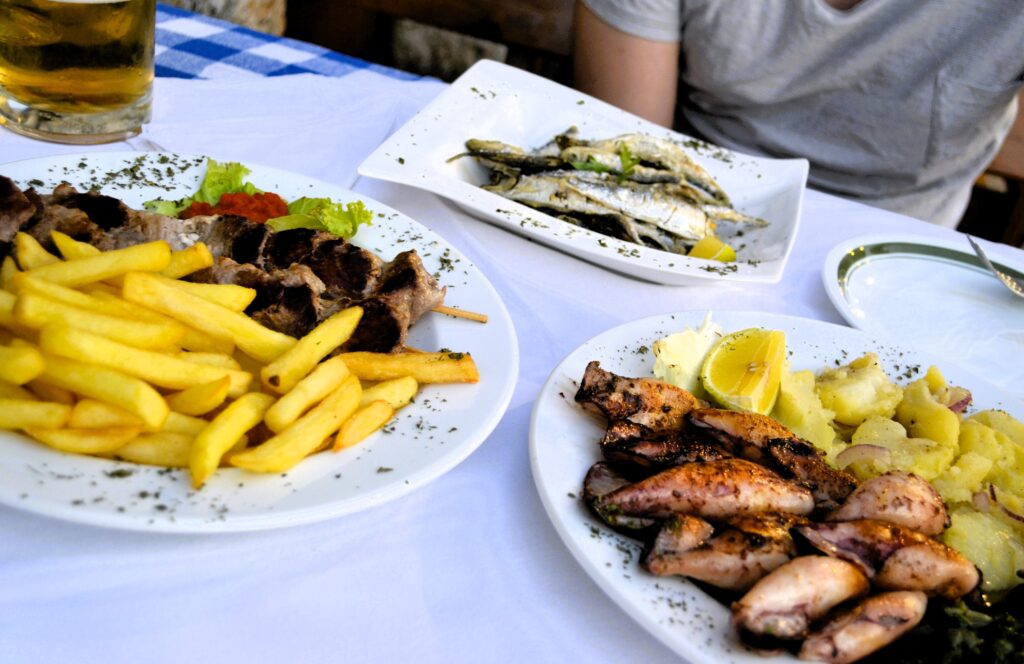
For any meat eaters out there, you will also find plenty of grilled meat dishes and stews too. Cevapi is a popular street food in Croatia. They are skinless sausages made of pork and beef, with lots of paprika and garlic. They are served grilled, usually in flatbreads, loaded with lots of Ajvar, a spicy and extremely delicious capsicum/red pepper, and eggplant spread. You can often find imported Ajvar in European specialty stores to buy too.
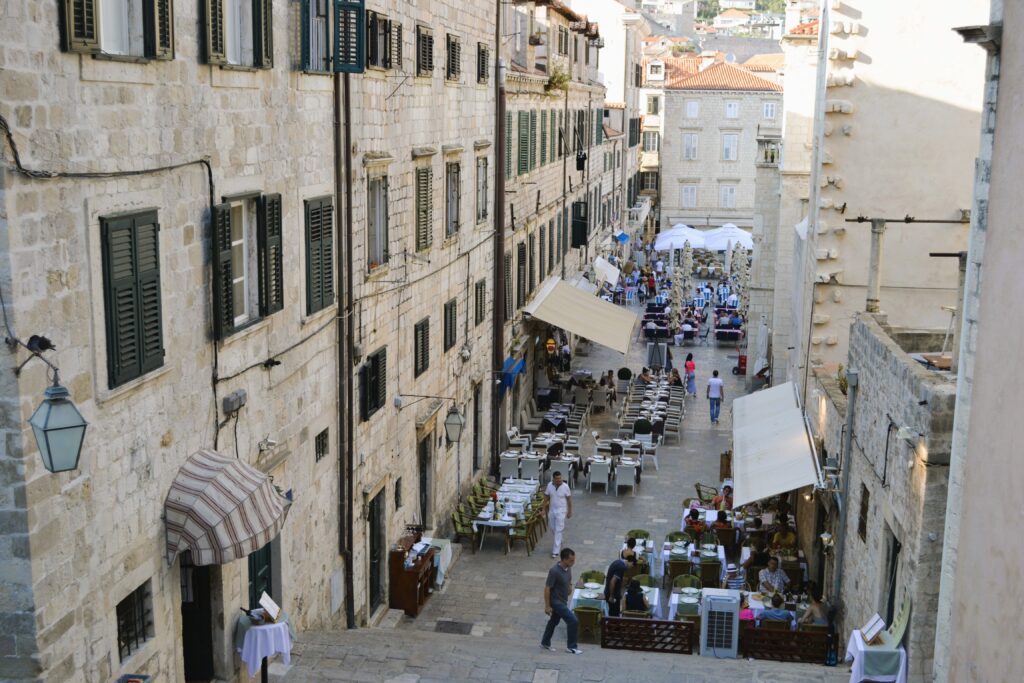
Ice cream shops are plentiful in Croatia and Rožata (a Croatian version of baked crème caramel) are popular desserts if you still have room!
These are 3 of the Best Islands in Croatia
Korčula
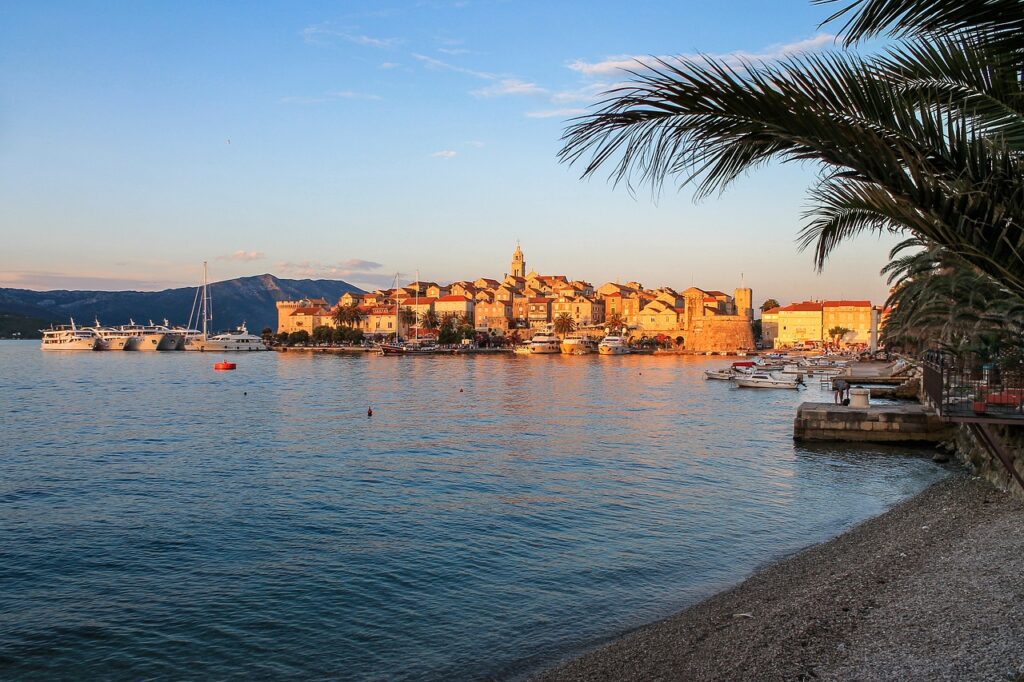
What to see in Korčula
Popular on the tourist route and one of the larger Adriatic Islands – Korčula has a glorious Old Town that is almost a miniature version of Dubrovnik. Beautifully maintained and built with Gothic and Renaissance architecture, it’s a must see in Korčula. If you look at a map of the old town, the streets were cleverly laid out in a fishbone shape in order to protect from the sun and wind.
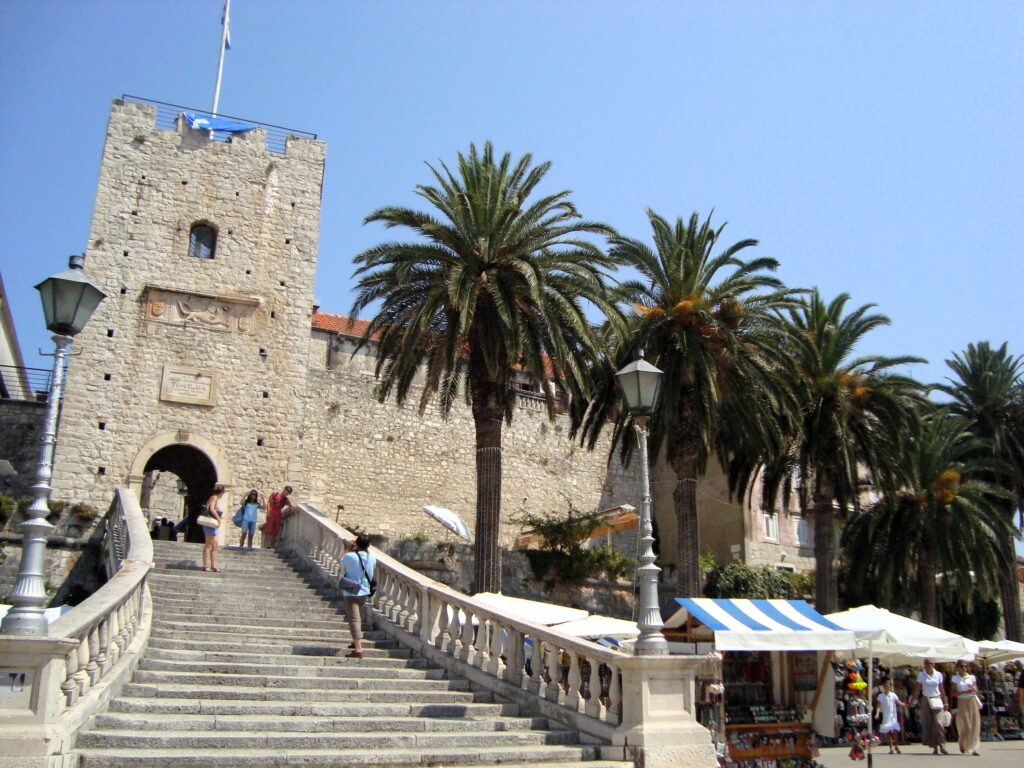
An interesting, although controversial, part of history for Korčula, is that it claims to be Marco Polo’s Birthplace, so you can see from the outside his supposed house, as well as a museum, and (lots of) souvenir shops.
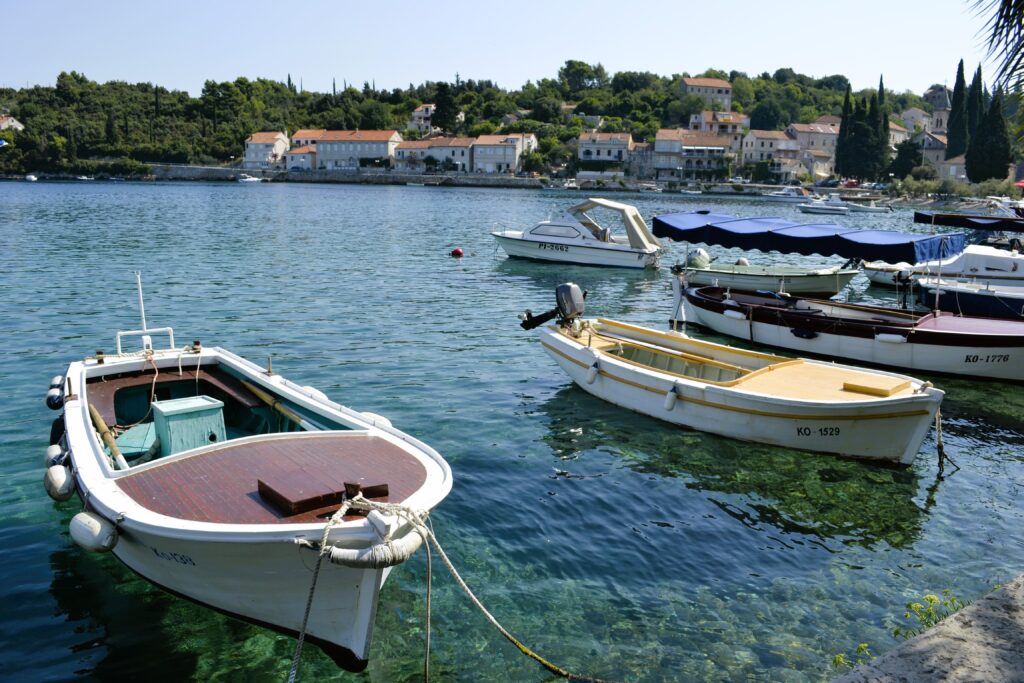
The beaches in Korčula are stunning and there are lots of places to see. Most of them are pebbles or rocky so arm yourself with some proper footwear! Nearby Lumbarda, does although have some great sandy beaches. If you are after a bit more quiet, the nearby islands of Proizd, with its turquoise waters and sloping rock formations, and Badija with its Franciscan monastery and deers roaming around, are fantastic day trips from Korčula.
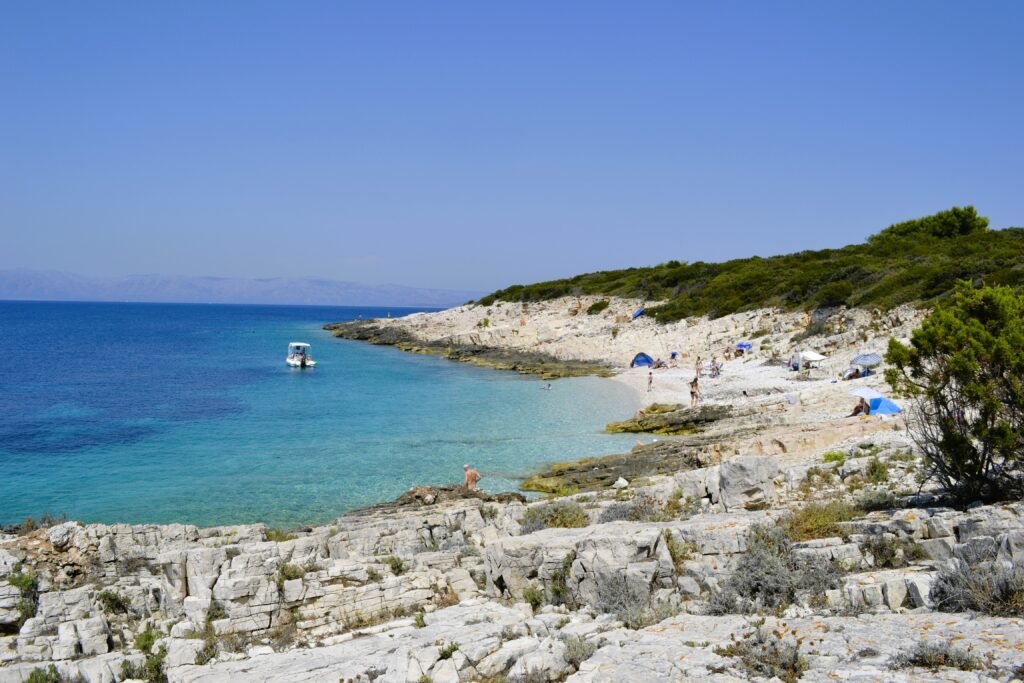
How Long to Stay in Korčula
4 – 5 Days
Accommodation in Korčula
There is a limited amount of full-service hotels on the islands, most of the accommodation is apartments and guesthouses. Korčula Town, Vela Luka & Lumbarda are the most popular places to stay. The small village of Racisce is a bit quieter but also a great little town to be based in if you have a car to get around. Check out Booking.com for a wide range of accommodations in Korčula.
Getting to Korčula
There are two major Ferry ports in Korčula – Domince & Vela Luka. Daily Ferries and Catamarans from Dubrovnik (approx. 2 hours), Split (approx. 3 hours), Hvar (approx. 1.5 hours).
Check Jadrolinija’s website for full schedule.
Vis
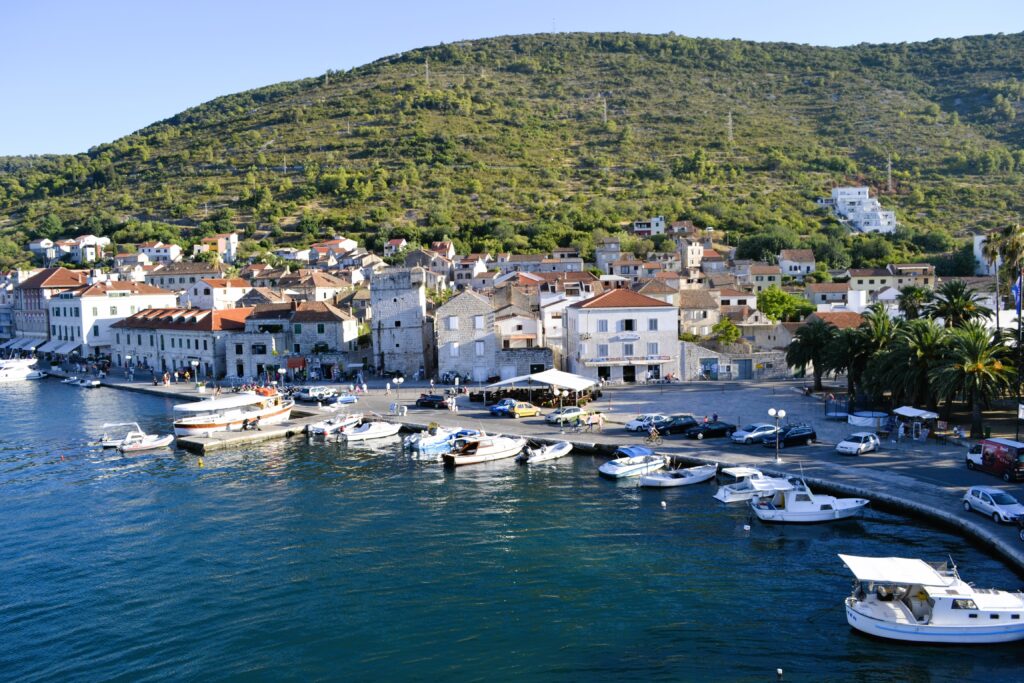
What to see in Vis
One of the less developed islands of Croatia, Vis is still rugged & filled with vineyards and was fairly undiscovered to tourism up till recently. This is mainly due to the island actually being closed off to tourist only up till 1989 as it was a military base.
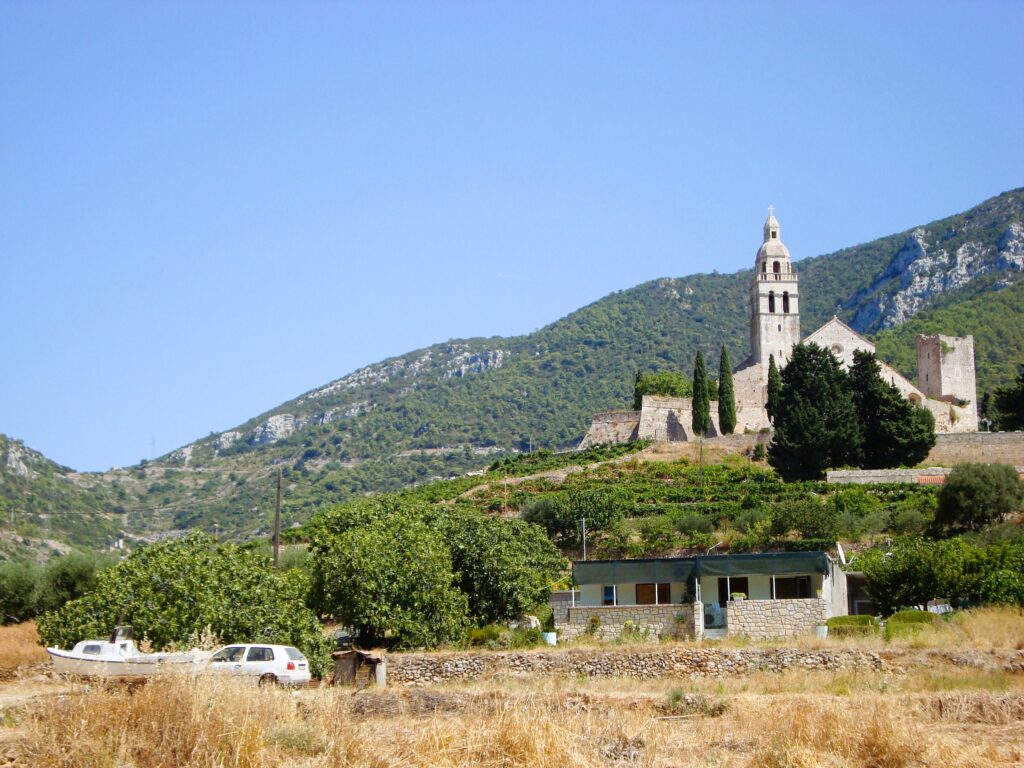
The two main towns of Vis and Komiža are cozy and stretch along the coastline of this small island. The main attractions are the local beaches of Stiniva & Zaglav (there are many more coves too) and taking a boat trip to Biševo to view the Blue Cave.
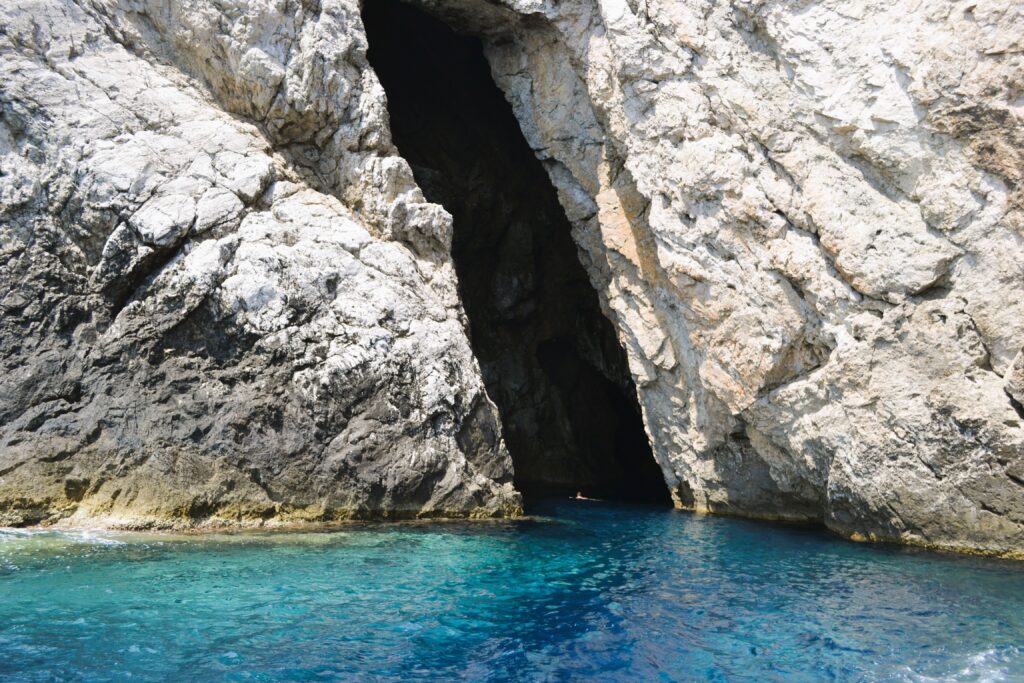
How Long to Stay in Vis
3 – 4 days
Accommodation in Vis
There is a limited amount of hotels on the islands, most of the accommodation is apartments and guesthouses. Most of the accommodation is located in Komiza or Vis Town. Check out Booking.com for a wide range of accommodations in Vis.
Getting to Vis
There is one Ferry port in Vis – Vis Town. Daily Ferries and fast catamarans from from Split (approx. 1.5 to 2.5 hours).
Check Jadrolinija & Krilo for full schedule.
Hvar
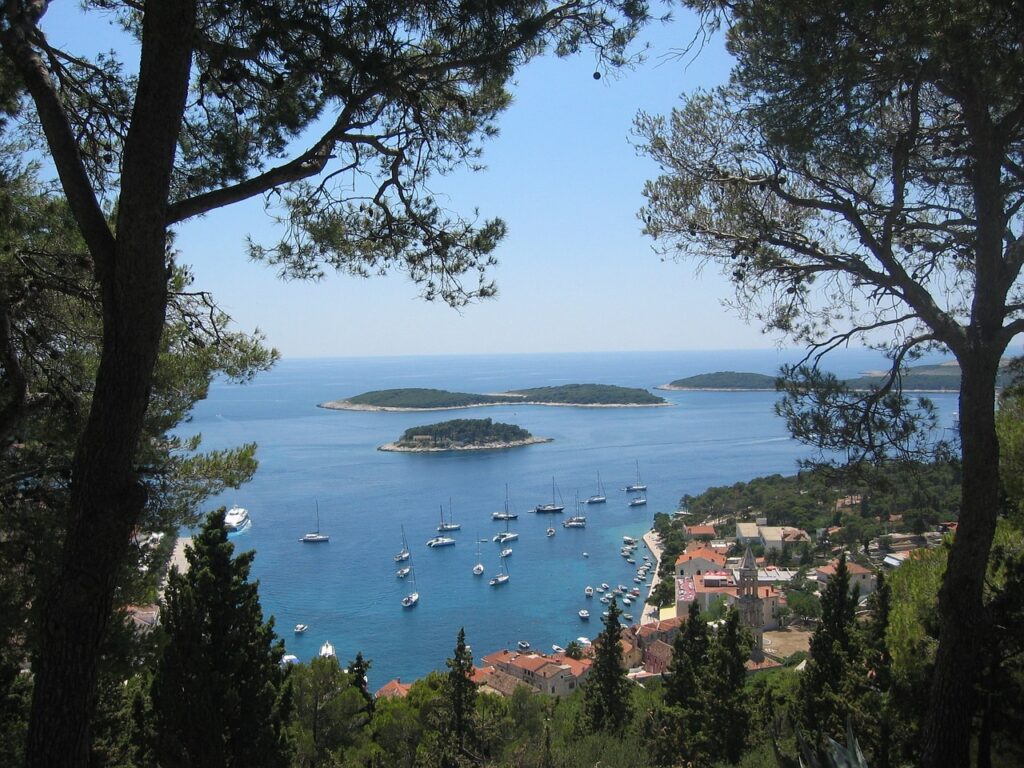
What to see
Green Hvar has become to be known as one of the party islands of Croatia. It has lots of bars, beach clubs and can get very busy over the summertime. The main town of Hvar is located on the harbour and rows and rows of luxury yachts line the waterfront of this beautiful island. The town centre itself is quite small and can be seen easily in a few days. St Stephens Cathedral has been standing proud in the main square for centuries and is worth a visit as you stroll through town.
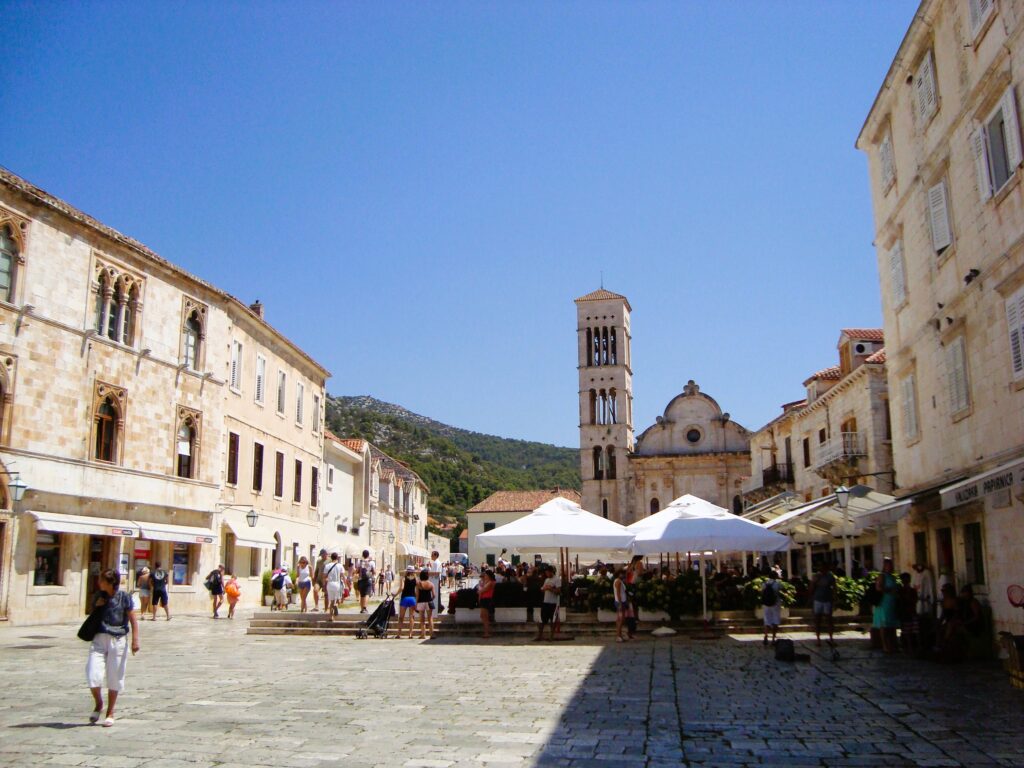
Take a 30-minute hike to Hvar Fortress for fantastic views over the island. To cool off, head to the nearby beach of Dubovica or take a boat trip over the swim in the clear blue waters of Pakleni Islands.
How Long to Stay in Hvar
2 – 3 days
Accommodation in Hvar
Due to being ‘the place’ to be in Croatia, Hvar has some of the most luxurious and expensive accommodations of all the islands. Accommodation in the old part of Hvar town can be very pricey and noisy over the summertime so venturing further out of town and staying in apartments and guesthouses can be a more affordable option. Stari Grad in the north of the islands also has accommodations and is a quieter, more affordable alternative to Hvar Town. Check out Booking.com for a wide range of accommodations in Hvar.
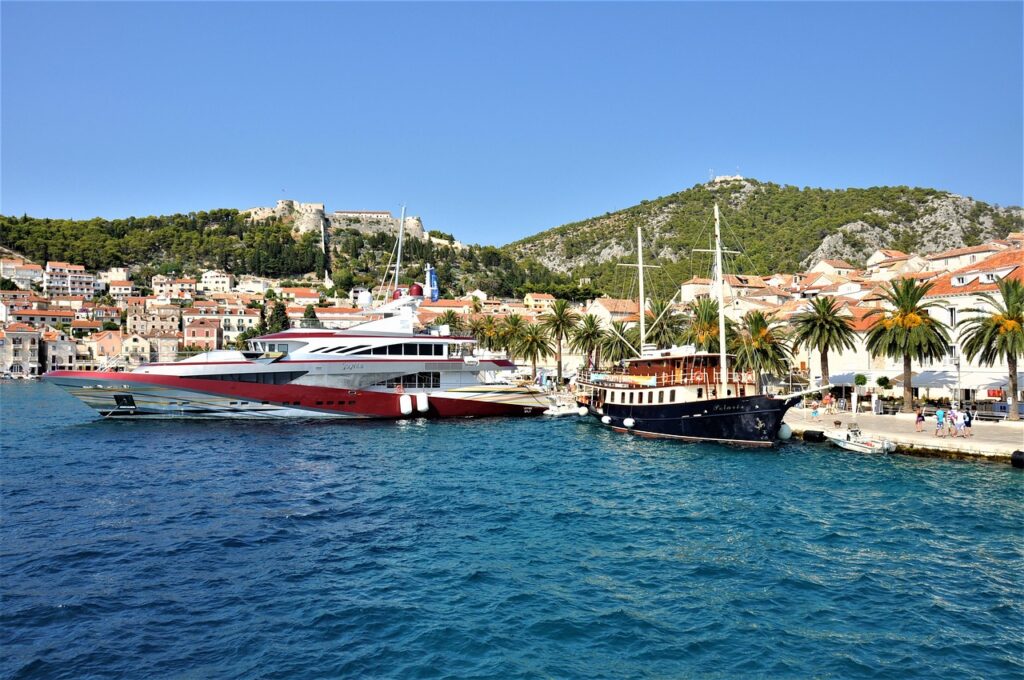
Getting to Hvar
There are two major Ferry ports in Hvar – Stari Grad and Sucuraj. Daily Ferries and Catamarans from Split (just over 1 hour), Korčula (approx. 1 hour), Dubrovnik (approx. 3 hours).
Check Jadrolinija & Krilo for full schedule.
Book
Hope you enjoyed this article! Want to read more? Check out more of my posts below:
Where is better: Dubrovnik or Split? HERE.
How to Save Money When Travelling Around Europe HERE & Europe Hidden Gem Destinations HERE.
To compare and book flights to Europe, head over to Skyscanner.
Looking for some great hotel deals? Check out Expedia or Booking.com.
Compare car hire prices at Expedia Cars.



